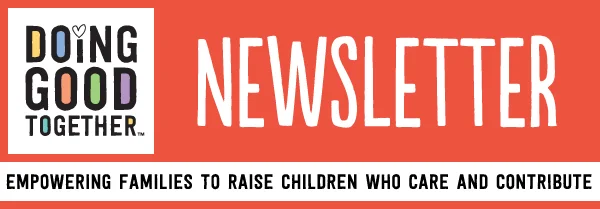RAISING COURAGE: TEACHING KIDS TO DO THE RIGHT THING
As summer ends and school starts up again, our children will be faced with situations that require them to stand up for themselves or others-and for what they believe in. And although our kids know right from wrong, acting on that knowledge can be surprisingly difficult-and even scary. Courage can fortify them to live and honor their deepest values. We offer tips for encouraging kids to act bravely.
-Jenny Friedman, Executive Director
STEPS TO A MIGHTY HEART
Make a Difference...
At dinner tonight, have each family member name things he or she would like to try but is afraid to. Then have each pledge to do one thing that's out of his or her comfort zone: Visit a sick relative, sit next to someone in the school lunchroom who isn't popular, try a new sport or food, touch a bug, walk over a tall bridge. At subsequent dinners, report back about how it felt to face up to these fears. Courage painted on colored rocks
Point out when your child acts courageously. Often children see courage as confined to extraordinary, heroic acts. But ordinary acts can take guts, too, like when your daughter resists pressure to do something dangerous or your son speaks up for an animal that's being tormented.
Coach your children on how to do the right thing in challenging situations. For example, finding money that doesn't belong to them, seeing someone being bullied or a good friend asking for help cheating on a test.
Allow independence, including lots of unstructured play time. Give your children age-appropriate opportunities to explore on their own. This (more than classes and camps) is where children develop the skills that matter in life.
Help your child learn to cope with what scares them. Don't ridicule or make light of their fears. Together problem-solve ideas for taming them.
Tell stories and read books about courageous people, like Rosa Parks, Mahatma Gandhi and the young Pakistani education activist Malala Yousafzai. Talk about how their courage looked from the outside, and how it might have felt very different from the inside.
THREADS OF COURAGE
Talk About It...
- Ask your children what the word "courage" brings to mind. Talk about the many ways people can be brave.
- Talk about your own experiences with being brave - or when you failed to be.
- Talk about how making certain choices might result in the loss of popularity and how to navigate that with courage.
- Think of examples when each of you has known the right thing to do but didn't have the courage to do it - and times when you did.
- Talk about the distinction between courage and recklessness. Give examples of each. Emphasize the need for difficult decisions to be well-considered and the importance of acting on our values rather than our impulses.
Learn About It...
One by Kathryn Otoshi (ages 4-8). This artful book provides an important message about bullying, using colors and numbers that have unique personalities.
The Story of Ruby Bridges by Robert Coles (ages 4-8). Now a classic, this tells of an intrepid African-American 6-year-old who was sent to integrate a New Orleans elementary school in 1960. Despite being taunted by angry white parents, Ruby maintains her dignity and sense of compassion.
Not Afraid of Dogs by Susanna Pitzer (ages 4-8). A funny and engaging story of a boy who overcomes his fears (all by himself) and forms a new friendship in the process.
INSPIRATION
I learned that courage was not the absence of fear, but the triumph over it. The brave man is not he who does not feel afraid, but he who conquers that fear.– Nelson Mandela



